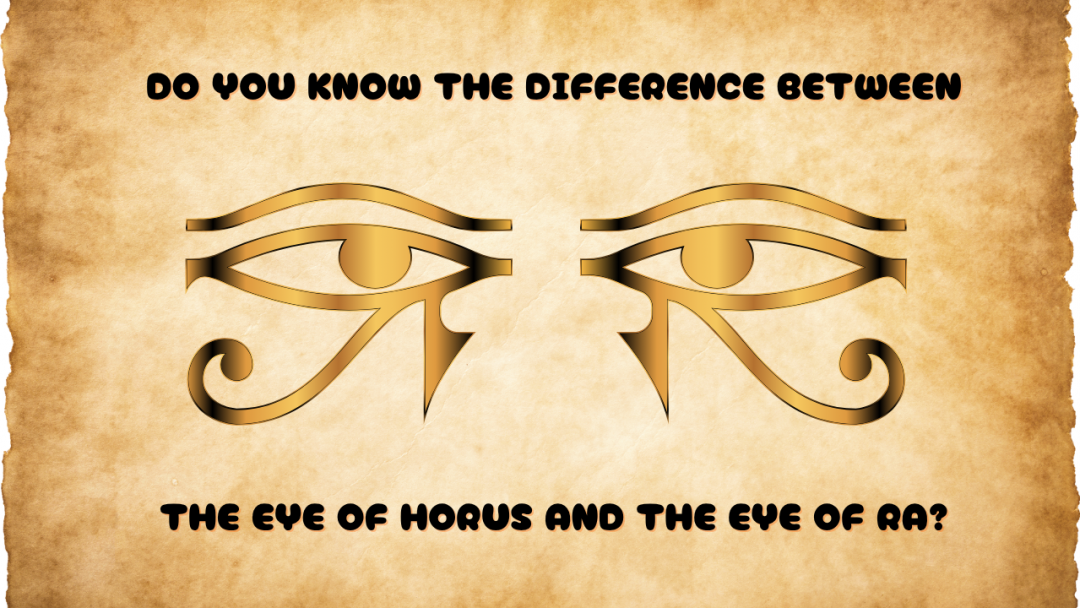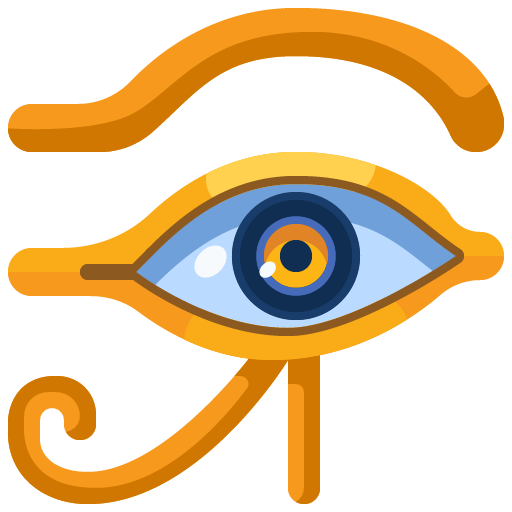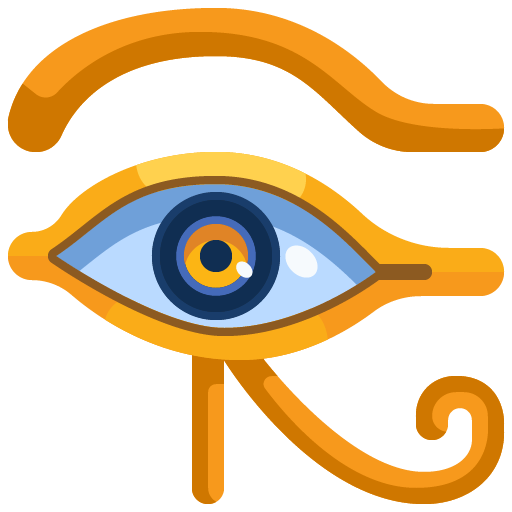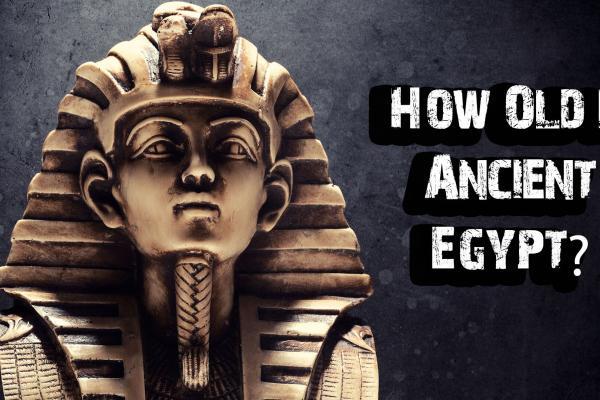
What’s the difference between the Eye of Ra and the Eye of Horus?
Ancient Egyptian mythology is filled with rich symbolism, cosmic drama, and layers of meaning that evolved over thousands of years. Among its most iconic emblems, two symbols stand out not only visually but spiritually: the Eye of Ra and the Eye of Horus. They may look similar at first glance, but their histories and meanings diverge in fascinating ways.
If you’ve ever wondered which is which, what each one represents, or why they matter, this post will walk you through everything you need to know.
The Eye of Ra: The Solar Eye of Power and Protection

The Eye of Ra is the embodiment of the sun, blazing across the sky as a watchful and protective force. It is typically associated with the right eye, corresponding to the bright, unblinking vigilance of the daytime sun.
A Weapon of Divine Wrath
Unlike the soothing connotations we often assign to eyes in modern symbolism, the Eye of Ra carries an intensity that borders on ferocity. It is a symbol of:
- Protection
- Destruction of threats
- Divine authority
- Fury unleashed to preserve order
In myth, Ra sends his Eye forth, not as a metaphor, but as a living, divine force. This Eye often takes the form of a goddess commissioned to crush the enemies of Ma’at (cosmic order). Many goddesses step into this role at different times, earning the title “Eye of Ra.” Some of the most famous include:
- Bastet
- Sekhmet
- Hathor
- Tefnut
- Wadjet
- Mut
Each goddess expresses the Eye’s power differently. Bastet’s protection is warm and watchful; Sekhmet’s is blistering and unstoppable. But all operate as Ra’s defenders, linked by the Eye’s solar, fiery nature.
A Symbol You Wear for Protection
For modern practitioners or spiritual seekers, the Eye of Ra serves as a talisman of strength, courage, and the ability to cut through negativity. It is the symbol you wear when you want the sun at your back, warm, powerful, and fierce.
The Eye of Horus: The Lunar Eye of Healing and Protection

Where the Eye of Ra burns, the Eye of Horus heals—this symbol is tied to the moon, usually represented as Horus’s left eye, the eye injured in one of the most dramatic myths of ancient Egypt.
A Myth of Loss and Restoration
During the legendary conflict between Horus and Set (known as the Contendings), Set damages or tears out Horus’s left eye. The violence of the act parallels the moon’s darkening, a celestial wound in the sky.
But this is not the end of the story.
The god Thoth (Djehuty), patron of wisdom and magic, restores the injured eye using powerful heka. This restored eye becomes a symbol of:
- Healing
- Wholeness
- Regeneration
- Protection
- Balance restored after chaos
The cycle of the moon echoes this myth perfectly:
- waning = the Eye damaged
- waxing = the Eye restored
How the Eye of Horus Became a Symbol of Medicine
Because it was healed and renewed, the Eye of Horus became a longstanding symbol of health and medicine. Its shape even influenced the modern prescription symbol “Rx,” believed to be a stylized form of the Wedjat.
Today, people wear it as a charm for:
- Good health
- Recovery
- Spiritual balance
- Protection
(And yes, pairing it with an Ankh is very fitting, since the Ankh symbolizes life.)
A Mythic Twist: When Horus’s Eyes Are Both Sun and Moon
Egyptian mythology wasn’t a single, unified canon — it varied by time period and temple tradition. In some stories, Horus’s right eye is the sun and his left eye is the moon, giving him dominion over the skies day and night. This overlap with Ra likely developed from syncretism between Horus, the sky god, and Ra, the sun god.
This is why you may find seemingly contradictory stories: it’s not inconsistency — it’s evolution.
So What’s the Difference, Really?
Here’s the simplest way to remember them:
| Symbol | Associated Eye | Celestial Body | Primary Meaning |
|---|---|---|---|
| Eye of Ra | Right | Sun | Power, divine wrath, protection |
| Eye of Horus | Left | Moon | Healing, restoration, wholeness, protection |
Both provide protection, but in different ways:
- Ra protects by force.
- Horus protects by restoring.
Where Does Bastet Fit In?
Because she is one of Ra’s daughters and one of the goddesses who can take on the role of the Eye of Ra, Bastet is deeply tied to the solar protective force. However, she also appears in myths involving the Eye of Horus, even rescuing or carrying it in some stories.
This means either symbol is perfectly appropriate to associate with Bastet. The choice depends on which aspect you want to honor:
- Eye of Ra → Bastet the Protector
- Eye of Horus → Bastet the Healer and Guardian of the Home
Neither is disrespectful. In fact, many pendants are designed so that the orientation can be interpreted either way.
Why These Symbols Still Matter
The endurance of the Eye of Ra and the Eye of Horus isn’t just about aesthetics — though their designs are undeniably striking. These symbols survive because they speak to universal themes:
- The need for protection
- The process of healing
- The struggle between chaos and order
- The cycles of nature, life, and personal growth
Whether you approach them from a spiritual path, a cultural interest, or a symbolic perspective, both Eyes offer layers of meaning that remain powerful today.
The Eye of Ra and the Eye of Horus are sister symbols, connected yet distinct. One burns with solar fury; the other glows with lunar healing. Together, they reflect a complete vision of protection: one that destroys what threatens and one that restores what’s broken.
And that is why they remain two of the most compelling symbols in the ancient world — and why people still feel drawn to them today.
Share this:
- Click to share on Facebook (Opens in new window) Facebook
- Click to share on Pinterest (Opens in new window) Pinterest
- Click to share on X (Opens in new window) X
- Click to share on Telegram (Opens in new window) Telegram
- Click to share on Pocket (Opens in new window) Pocket
- Click to share on WhatsApp (Opens in new window) WhatsApp
- Click to share on Reddit (Opens in new window) Reddit
- Click to share on LinkedIn (Opens in new window) LinkedIn
- Click to share on Tumblr (Opens in new window) Tumblr
- Click to print (Opens in new window) Print

